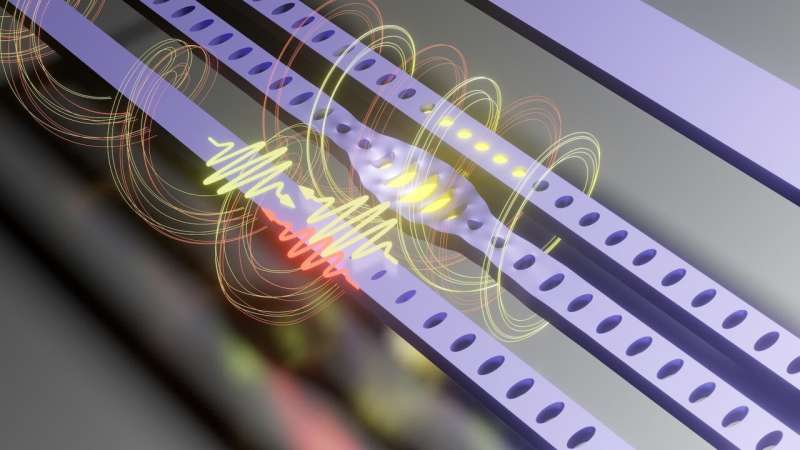This article has been reviewed according to Science X's editorial process and policies. Editors have highlighted the following attributes while ensuring the content's credibility:
fact-checked
peer-reviewed publication
trusted source
proofread
Study paves way for development of advanced quantum networks

The ability to transmit information coherently in the band of the electromagnetic spectrum from microwave to infrared is vitally important to the development of the advanced quantum networks used in computing and communications.
A study conducted by researchers at the State University of Campinas (UNICAMP) in Brazil, in collaboration with colleagues at ETH Zurich in Switzerland and TU Delft in the Netherlands, focused on the use of nanometric optomechanical cavities for this purpose. These nanoscale resonators promote interaction between high-frequency mechanical vibrations and infrared light at wavelengths used by the telecommunications industry.
An article on the study is published in the journal Nature Communications.
"Nanomechanical resonators act as bridges between superconducting circuits and optical fibers. Superconducting circuits are currently among the most promising technologies for quantum computing, while optical fibers are routinely used as long-distance transmitters of information with little noise and no signal loss," said Thiago Alegre, a professor at the Gleb Wataghin Institute of Physics (IFGW-UNICAMP) and last author of the article.
According to Alegre, one of the key innovations in the study was the introduction of dissipative optomechanics. Traditional optomechanical devices rely on purely dispersive interaction, where only photons confined in the cavity are efficiently dispersed. In dissipative optomechanics, photons can be scattered directly from the waveguide to the resonator. "Optoacoustic interaction can be controlled more tightly as a result," he said.
Prior to this study, dissipative optomechanical interaction had been demonstrated only at low mechanical frequencies, precluding important applications such as quantum state transfer between the photonic (optical) and phononic (mechanical) domains. The study demonstrated the first dissipative optomechanical system operating in a regime where the mechanical frequency exceeded the optical linewidth.
"We succeeded in raising mechanical frequency by two orders of magnitude and achieved a tenfold rise in the optomechanical coupling rate. This offers highly promising prospects for the development of even more effective devices," Alegre said.
Quantum networks
Fabricated in collaboration with TU Delft, the devices were designed to use technologies that are well-established in the semiconductor industry. Nanometric silicon beams were suspended and free to vibrate so that infrared light and mechanical vibrations were confined simultaneously. A laterally placed waveguide positioned to permit the coupling of the optical fiber to the cavity gave rise to dissipative coupling, the key ingredient of the results presented by the researchers.
The study offers novel possibilities for the construction of quantum networks. In addition to this immediate application, it lays a basis for future fundamental research. "We expect to be able to manipulate mechanical modes individually and mitigate optical non-linearities in optomechanical devices," Alegre said.
More information: André G. Primo et al, Dissipative optomechanics in high-frequency nanomechanical resonators, Nature Communications (2023). DOI: 10.1038/s41467-023-41127-7
Journal information: Nature Communications
Provided by FAPESP




















